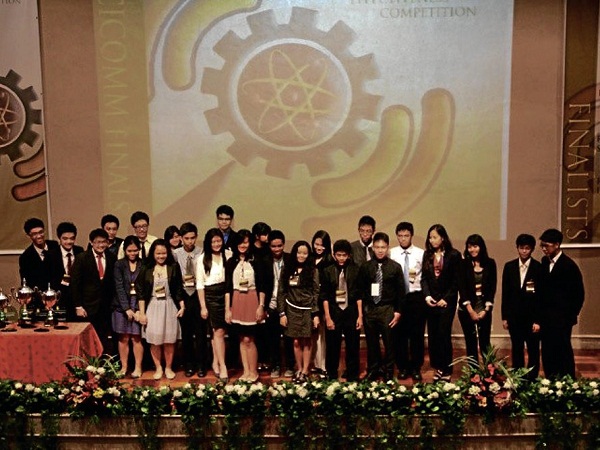
If you still think coming up with a science presentation involves research, copy-and-paste, and then reading it all on your PowerPoint, think again. After all, how do you lecture a crowd, one generally sharing your age and attention span, with topics ranging from stem cell regeneration to something as challenging as quantum physics without the nosebleed?
Thanks to advancements in technology, let alone the Internet, creativity has never been more handy to guide today’s generation in preparing and presenting up front. Owe it to our access to information and data, plus the priceless convenience of having it all in a flash, right at our fingertips.
And so, a one-of-kind science contest was born out of this huge development. It’s the Science Effectiveness Communication Competition (SciComm) organized by the University of Asia & the Pacific’s School of Science and Engineering. With two successful runs in January/February and just last September, this innovation is redefining the science of communication itself.
It is also a possible benchmark for other breakthroughs to come. “We figured the academe is already loaded with countless science contests, so we decided to hold an initiative and give it a twist,” shared Dr. Gil Claudio, competition organizer. “It is groundbreaking since, as far as we know, it is the first and only one of its kind that focuses on the presentation skills of the high school students. They will have to have a firm grasp of topics in science, and at the same time be effective at communicating their ideas so they will have to rely more on basic skills—clarity of thought and effectiveness in communication.”
This endeavor is all the more challenging since it is purely hardcore science and technology. The presentations are not simply explanations of “how one works,” since participants will have to base them on a paper from a scientific journal written by scientists for other scientists, and not simply for a general audience.
Elimination
SciComm 2, which had its elimination and final rounds in September, saw the participation of 20 high schools, most with two teams each with an accompanying coach.
Together with their respective coaches, the participants shared their topics for 10 minutes. From 42 teams, the field was narrowed to just 12 for the finals. “It is a very competitive year indeed. The emerging finalists were all underdogs—none of the top three schools from SciComm 1 made it,” revealed Claudio.
The judging panel also reflected the same standards, a good mix of professionals from the fields of science and communication. It included Carlos de Leon, Govind Daswani, Felix Obrero, Ph.D; and Aaron Villaraza, Ph.D.
This year’s top honors went to Team Madikit i-Tech, consisting of Nina Gabrielle Domingo and Maxine Helga Pinpin, representing the Philippine Science High School. Their topic, “Bracing for a Solar Superstorm,” and their lively presentation performance convinced the judges of their edgy communication skills.
“I’m totally shocked,” reacted Domingo when asked how she felt onstage. “I guess we owe it to our supportive coaches and schoolmates,” beamed Pinpin. While the two excitedly embraced their championship, they shared how their hard work paid off, and harped on the importance of teamwork.
Second place went to MSHS Team A, composed of Alan Joseph Luga and Ma. Jesusa Faustina Ortega, representing the Makati Science High School with the topic “Halting the World’s Most Lethal Parasite.” And ultimately, third place was awarded to Miriam College High School’s Team Agnitio with members Kyla Michal Cabatit and Anna Rominia Cruz on the topic “Driving Toward Crashless Cars.”
As SciComm 2 drew to a close, Claudio rallied more and more high schools to include the competition in their curriculum. With a warm reception and significant displays of enthusiasm from this year’s two competitions, the UA&P School of Science and Engineering sees bigger things to come.
“Who knows, when we become bigger and bigger, maybe we’ll have SciComm Cebu, SciComm Pampanga in the near future,” said Claudio as he formally closed the competition. Only time will tell, but in the meantime, science communications should be enjoying its new image.
For more information on the Science Effectiveness Communication Competition, visit https://scicomm.uap.asia/








































